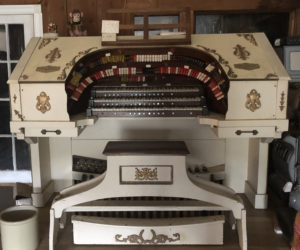Make no mistake about it: five years of seeking out and sampling wines for Sostevinobile takes its toll in unforeseen ways. Your West Coast Oenophile recently donated over 50 wine glasses to Goodwill, not necessarily out of a sense of χάρις—despite the urbanity of the local indigent populace, who have compelled pharmacies here to safeguard their supply of dental floss in locked display cases—but, rather, in an overdue attempt to streamline the clutter in my 150 ft.² kitchen. Standing out among the forgotten gems from this meticulous collection, culled from over two decades of professional tasting, was a pair of souvenir glasses from the erstwhile Consorzio CalItalia, the trade association for locally-produced Italian varietals that I have frequently cited here. Although I’ve had owned this set since 2005, I somehow had failed to notice that the bowl was engraved with a secondary promotional logo, one that inextricably explained why Consorzio had collapsed so spectacularly. Its principal co-sponsor had been that travesty masquerading as Italian cuisine—Olive Garden!
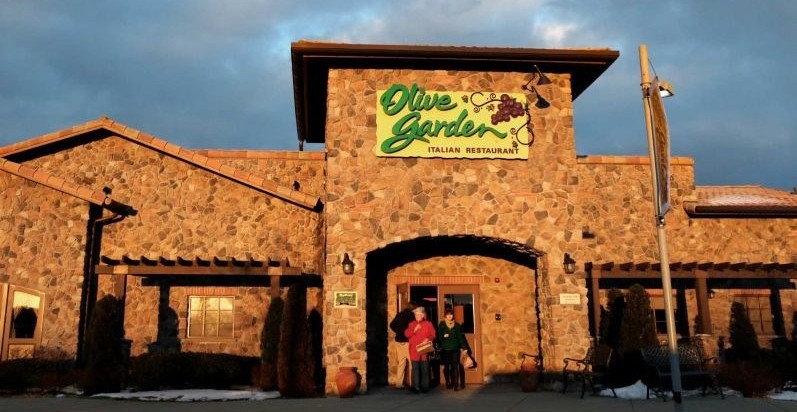 Hospitaliano! It cannot be overstated how fundamentally offensive these poseurs are, not simply because their culinary assembly line poses an affront to anyone who cherishes their rich Italian heritage. More odious renditions of this artifice certainly can be found—assuming I could ever muster the temerity to set foot in one of their pretentious prefab outlets. And know that I find jejune, cartoonish stereotypings, like The Fonz or the intellectually vacant Vinny Barbarino, far more debasing than any of the 30-second spots Darden Restaurants broadcasts. But the none-too-subtle implication of Olive Garden, with its pathetic promotional panderage, is that not just Italian, but any ethnicity can be readily coöpted—nay, blithely bastardized—for crass commercial benefit.
Hospitaliano! It cannot be overstated how fundamentally offensive these poseurs are, not simply because their culinary assembly line poses an affront to anyone who cherishes their rich Italian heritage. More odious renditions of this artifice certainly can be found—assuming I could ever muster the temerity to set foot in one of their pretentious prefab outlets. And know that I find jejune, cartoonish stereotypings, like The Fonz or the intellectually vacant Vinny Barbarino, far more debasing than any of the 30-second spots Darden Restaurants broadcasts. But the none-too-subtle implication of Olive Garden, with its pathetic promotional panderage, is that not just Italian, but any ethnicity can be readily coöpted—nay, blithely bastardized—for crass commercial benefit.
Even without being underwritten by such an odious enterprise, my oft-mentioned desire to launch Risorgimento as a successor to Consorzio CalItalia faces significant hurdles, something that the diaspora of this year’s Rhône Rangers Grand Tasting painfully drove home. Like many in the trade, I had tried to keep an open mind about trekking across the Bay to the Craneway Pavilion in Point Richmond (if truth be told, Sostevinobile owes Richmond a debt of gratitude I will explicate after our doors finally open). This renovated Ford assembly plant occupies a scenic perch along the eastern shore of the San Francisco Bay, with unrivaled vistas of The City, several bridges, and the sundry islets that dot the estruary; warm sun, a negligible breeze and a reasonably-priced chartered ferry made the excursion far more placid than battling the inevitable traffic that clogged the main thoroughfares in either direction.
Still, less than thirty of my trade cohorts took advantage of this amenity, an ominous portent for the ensuing event. Inside the cavernous hall, the 89 participating wineries represented a striking diminution from just a few years back when nearly 200 filled the Festival Pavilion at Fort Mason, and though an ample number of professional tasters did arrive by car or public transportation, public ticketholders were rumored to be only 120.
In truth, I doubt more than forty paid attendees actually showed up, but no matter the actual tally, it was apparent that the Rhône Rangers membership absorbed a substantial financial hit for the afternoon. Still, an extensive selection of impressive varietals and blend, along with a number of new participants, made for a worthwhile excursion. First up, I saddled up to Los Olivos’ Bernat Estate, an organic winery that features organized retreats and an onsite café. Along with Sangiovese and Nebbiolo, they specialize in a trio of bottlings, starting with the amiable 2009 Presence, their Colson Canyon Syrah. More impressive, however, was their 2009 Gratitude, an estate-bottled Syrah, which was complemented by an equally delightful 2011 Grenache Blanc, Santa Ynez Valley.
Making the trek to Richmond from the Central Coast, new attendee Le Cuvier debuted with an impressive 2010 Viognier Paso Robles, then segued to their 2010 Syrah Paso Robles. I found myself vastly impressed with their 2010 L’Enfant du Pape, a subtle blend of Viognier, Syrah, Mourvèdre, and Grenache, while the barrel sample of their 2010 Grenache Paso Robles portended great promise. Another newcomer, Lightning Wines, enjoyed a far easier commute from Napa to pour their 2013 CdP Blanc, a distinctive mélange of Roussanne, Picpoul Blanc, and Grenache Blanc sourced from Paso Robles, and a 2012 Grenache Sonoma County. Most striking, their 2011 Syrah Phoenix Ranch, with grapes from a Rhône-focused vineyard on Altlas Peak I had not previously encountered.
Hyde Vineyard in Carneros has long been familiar; nonetheless, Mira Winery offered distinctive expressions of their grapes, with both the 2010 Syrah Hyde Vineyard and its preceding 2009 vintage. Northeast of Carneros, the Capay Valley iepresents a designated AVA with a burgeoning reputation that also serves as the historic home of the Yocha Dehe Wintun Nation. With over 11,000 acres in production, the tribe today produces a diverse range of agricultural fare, including olive oil, honey, and a nascent wine label: Séka Hills. Derived from the Patwin word for blue, their inaugural efforts here included their amiable 2012 Viognier and a proprietary blend, the 2012 Tuluk’a, a decidedly nascent endeavor combining 51% Cabernet Sauvignon, 30% Syrah, 10% Cabernet Franc, 6% Petit Verdot, and 3% Petite Sirah.
Despite the relatively obscure location, a few intrepid souls found their way to Richmond from the Pacific Northwest. Hailing from Prosser, WA, newcomer Mercer Estates is a fourth-generation Horse Heaven Hills producer, here showcasing their 2013 Viognier, the 2013 Rosé (100% Grenache), and their Estate Reserve blend, the 2010 Ode to Brothers. a GSM featuring 40% Grenache, 39% Syrah, and 21% Mourvedre. Also debuting at Rhône Rangers, Southern Oregon’s EdenVale featured a 2009 Viognier that seemed past its prime alongside a noteworthy 2007 Grenache.
Expediency dictates that I limit my review of this tasting to these new discoveries—I have chronicled the rest of the attendees multiple times over the past five years, and while I am hardly sanguine about the financial setback Rhône Rangers must have incurred from this year’s tasting, I can only hope this choice of venue will not prove utterly deleterious and 2015 will see a new and reinvigorated tasting closer to the nexus of the Bay Area.
Another Fort Mason refugee found its change of venue diminished its scope and attendance, though not nearly as drastically as its French counterpart. Over the past several years, I have endeavored to help promote T.A.P.A.S., the trade association for Iberian varietal producers in the US., in no small part because I had hoped to see them catalyze renewed interest in a diverse array of trade tastings. I fear, though, that this annual showcase may have already reached its pinnacle, with fewer than 40 wineries on hand for 2014. While core members of this organization, like Bokisch, Abacela, Verdad, Quinta Cruz, Pierce Ranch, and Twisted Oak remain committed to advancing this sector and promoting its events, but too many others, like Berghold and SilvaSpoons, along with maverick producers like Forlorn Hope, were conspicuous in their absence (along with the once obligatory culinary anchor, Marco Paella), new participants dwindled to a mere four—all from outside of California.
These Northwest newcomers included HillCrest, Oregon’s oldest estate winery, purportedly the first winery to bottle a Pinot Noir in the Beaver State. This pedigree was amply displayed in their NV One the Lamb, an intriguing blend of Mazuelo (Carignane) and Pinot Noir. I found their 2008 Cadiz, an Umpqua Valley Tempranillo quite appealing, while their Tempranillo/Cabernet Sauvignon (a SuperRioja?) blend, the 2009 Umpqua Ribera, proved superb. I was a bit less sanguine about their 2010 Tempranillo Della Terra Torero Nuevo, but truly cottoned to the 1998 Vintage Trop, a superbly aged, fortified, Port-style offering.
Previously, I hadn’t realized that there was an Oakland in Oregon, here represented by Triple Oak Vineyard, which fittingly featured a chronological vertical of its three most recent releases. This trio commenced with the striking 2010 Tempranillo Umpqua Valley. The 2011 bottling frankly seemed a bit wanting, while the quite-young 2012 hinted at fuller expression over the next 2-3 years. In contrast, the 2011 Tempranillo Rogue Valley from debuting winery Upper Five Vineyard proved a superb, compelling rendition of the varietal.
Further north, Woodinville’s wondrously named Vinateria Idilico proffered an excellent 2013 Albariño Yakima Valley. Their 2011 Tempranillo and 2011 Garnacha Columbia proved equally appealing, while the 2011 Graciano Snipes Mountain simply dazzled. And while Tempranillo, Albariño, and, to a degree, Garnacha—the 2011 Garnacha San Antonio Valley from Pierce Ranch proved astounding—predominated this T.A.P.A.S. session, I was pleased that a number of wineries poured Graciano, led by the spectacular 2011 Graciano Mokelumne River & Clement Hills that Bokisch farmed and bottled. Others included Fenestra’s 2011 Graciano Lodi, Riaza’s 2011 Graciano Clement Hills, and the 2010 Graciano Clement Hills from Quinta Cruz—all, I assume, sourced from Markus’ plantings, while Pierce Ranch showcased their own 2011 Graciano San Antonio Valley, Twisted Oak featured a 2011 Graciano Calaveras County, and Bob Lindquist’s Verdad poured the 2012 Graciano Ibarra-Young Vineyard from the Santa Ynez Valley.
Otherwise, the preponderance of the event seemed decidedly mainstream—no Trincadeira, no Tinta Cão, merely a pair of Souzãos, no Loureiro, and no Torrontés. The sole revelation here was from a number of wineries pouring Verdejo—I believe, for most, their first vintage. I must confess that, until this year’s tasting I had assumed Verdejo was simply the Spanish term for the Portuguese Verdelho—an error quickly rectified by sampling the two varietals side-by-side. Though slightly overshadowed by the more sublime 2013 Verdelho Yolo County, Berryessa Gap’s 2013 Verdejo Yolo County still very much pleased with its slightly tart palate. A similar (albeit slight) contrast marked the exceptional 2013 Verdelho Borden Ranch from the 2013 Verdejo Borden Ranch that Bokisch debuted. Equally compelling: the 2012 Verdejo Clarksburg from Riaza.
At this point, I must own to another of my ulterior motives—a wine blending project I am contemplating, to be called V (pronounced “quintus”). Like so many other endeavors I cite here, this, too, has been incubating far too long, as I have been searching for the hitherto elusive V-varietal #5 to complete this esoteric blend. And in Verdejo, my quest may have been fulfilled.
Despite an overt disappointment in the decline of these focused trade tastings, Sostevinobile remains firmly committed to our continued support of worthy organizations like T.A.P.A.S. and Rhône Rangers and will strive not only to bolster their efforts, but, of course, to showcase the incredible panoply of wines produced within our designated boundaries. Of course, a generous serving of paella (or bouillabaisse) along the way would go far in fueling my energies toward these ends…
Fast forward to the anomaly known as Pinot Days. This event abruptly shifted both its date and location from earlier in June to the end of the month and from Fort Mason to the resurrected Metreon Center overlooking Yerba Buena Gardens. As such, I would have predicted significantly diminished attendance from previous years, and indeed the number of participating wineries did dwindle by nearly ⅔, from 253 to 92! As such, new discoveries for Sostevinobile’s wine program were but few, starting with Attune Wines, a boutique Sonoma producer focused exclusively on Burgundian varietals. Veering from the sanctioned selections, they first pour a 2012 Chardonnay, which displayed a focused roundness. And while their 2013 Pinot Noir Rosé proved quite amiable, their 2011 Pinot Noir held up impressively for, admittedly, a most challenging vintage.
One of the hallmarks I have set for Sostevinobile has been an unwavering objectivity in the wines we review and select. So some may question my effuse praise for the exceptional Pinots Belden Barns poured, given that proprietor Lauren Belden also graduated from the Creative Writing program at Dartmouth, but coincidences will abound My introduction to their 2012 Estate Pinot Noir was beyond pleasant, while their 2012 Serendipity Block Pinot Noir proved one of the highlights of the afternoon. Belden Barns also bottles a discrete selection of white, including both an estate bottled Late Harvest Viognier and an Estate Grüner Veltliner, ambitious for so young a winery and certainly an rarity among Sonoma’s Pinot vineyards. I hope to report more in a future post.
One of the few wineries trekking from Oregon, Merriman Wines nonetheless made the most of their journey, scoring impressively with both their 2011 Cummins Road Pinot Noir and their outstanding flagship, the 2011 Estate Pinot Noir Yamhill-Carlton District, a wine that rivaled the aforementioned Serendipity. Though unrelated to Merriman Capital, another Dartmouth colleague I had previous approached for Sostevinobile’s financing, Merriman does share Belden Barn’s penchant for the anomalous, complementing their red production not with the typical Burgundian white, but, rather, an Old Vine Chenin Blanc, a varietal that has certainly become underserved on the West Coast.
Teac Mor sounds like an Oregon label, but, in fact, hails from the Russian River Valley. Though I would dispute co-owner Christine Moore’s contention that pistachios make for an excellent palate cleanser, I had no quarrel with the 4-year vertical they poured here. Being a young venture, their 2009 Russian River Valley Pinot Noir seemed a tad jejune, while the 2010 Russian River Valley Noir showed signs of hitting its stride. Atypically, their
2011 Russian River Valley Noir shone far brighter than its preceding vintages, while the 2012 bottling lived up to expectations for such a banner. year.
Another Sonoma producer, Kobler Estate, also showcased a vertical of their wines, beginning with the 2009 Russian River Pinot Noir. This well-balanced wine was followed with a striking 2010 Sonoma Coast Pinot Noir, the sole variant in this flight. The 2011 Russian River Pinot Noir seemed adequate for the vintage, while the 2012 Russian River Pinot Noir matched the loftiness of the 2010 bottling.
Though technically Spell Estate did not constitute a new label, it has subsequently parted ways with winemaker Shane Finley since I first encountered them and is, in essence, a wholly different entity. Yet Spell has most definitely suffered no diminution in its scope or profound quality under current winemaker Andrew Berge. After sampling their exquisite 2011 Russian River Valley Chardonnay, I found myself marveling equally at their trio of vineyard-designate Pinots: the 2012 Pinot Noir Nicole’s Vineyard, the 2012 Pinot Noir Alder Spring Vineyard, and their crown jewel—the 2012 Pinot Noir Marimar Estate Vineyard. Astounding wines, all.
Jayson Pahlmeyer is no newcomer, either, but Pinot Days afforded the opportunity to sample his much-heralded new Sonoma label, Wayfarer. Keeping stride with Pahlmeyer’s mythic Chardonnay, the 2012 Wayfarer Vineyard Pinot Noir proved a glorious wine. only to be outshone by the aptly-named 2012 Golden Mean Pinot Noir, a truly extraordinary expression of the grape. Similarly, FEL represents legendary Napa producer Cliff Lede’s conversion of Mendocino’s Breggo Cellars for his Sonoma and Mendocino operations. With equal aplomb, this new moniker debuted the 2012 Pinot Noir Anderson Valley alongside the vineyard designates 2012 Pinot Noir Savoy Vineyard (Anderson Valley) and 2012 Pinot Noir Hirsch Vineyard (Sonoma Coast).
I do not mean to give short shrift to the other labels showcased here—certainly I cannot fail to cite Wrath’s equally impressive 2011 Wrath Pinot Noir San Saba Vineyard nor its compelling 2011 Ex Vite Pinot Noir—but despite uncharacteristically arriving just as the gates opened, I only managed to sample a few other selections this afternoon from those wineries making a return appearance at this tasting. Typically, I tend to malinger at tastings of this scope, hoping to include as many different wineries as possible, but on this afternoon, I felt compelled to exit an hour before closing. For while the number of wineries on hand had considerably dwindled from years past, the number of public attendees barely differed from the throngs that filled Fort Mason!
Admittedly, I am not a person who bears up well in tight crowds. Trying to navigate such a compact space became intolerable almost immediately after the gates opened. Just as synæsthetes can see colors from sounds—as in Rimbaud’s Voyelles—I cannot taste when the volume reaches a certain decibel level. And so I surrendered to the futility of the exercise and departed.
As with the other tastings I have chronicled here, I am not seeking to critique the event, merely to comprehend its post-Fort Mason evolution. Certainly, I find it most encouraging that a major tasting can still draw a significant crowd, and while I am sure there are scores of Pinot Noir devotees, if not rabid fans throughout the Bay Area, I suspect the attendance at Pinot Days resulted more from aggressive marketing. And as I contemplate launching Risorgimento, I hope this holds true!
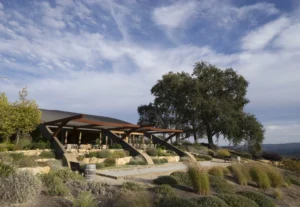 ross varietals from differing regions to create esoteric blends. Denner is one of the region’s foremost proponents of this unorthodox approach to œnology, amply demonstrated by the five new releases I sampled. The 2021 Theresa, while technically remaining within the strictures of the Rhône, married six white varietals: Roussanne, Grenache Blanc, Marsanne, Picpoul Blanc, Vermentino (Rolle), and Clairette Blanche, to produce a distinctive, if not proprietary blend that balanced just the right acidity to accompany any dish that called for white wine.
ross varietals from differing regions to create esoteric blends. Denner is one of the region’s foremost proponents of this unorthodox approach to œnology, amply demonstrated by the five new releases I sampled. The 2021 Theresa, while technically remaining within the strictures of the Rhône, married six white varietals: Roussanne, Grenache Blanc, Marsanne, Picpoul Blanc, Vermentino (Rolle), and Clairette Blanche, to produce a distinctive, if not proprietary blend that balanced just the right acidity to accompany any dish that called for white wine. 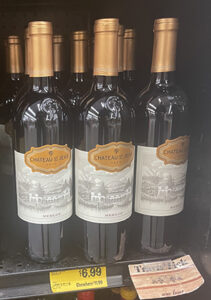 Late in 2021, Foley Family Wines added St. Jean to its ever-expanding portfolio and promptly set about to revive the label. Part of the strategy, I suspect, is to dump all of its lower-end inventory from its Treasury reign and start anew. At least, so it seems, given the sheer volume of Château St. Wines being turned over at Grocery Outlet Bargain Markets.
Late in 2021, Foley Family Wines added St. Jean to its ever-expanding portfolio and promptly set about to revive the label. Part of the strategy, I suspect, is to dump all of its lower-end inventory from its Treasury reign and start anew. At least, so it seems, given the sheer volume of Château St. Wines being turned over at Grocery Outlet Bargain Markets. 
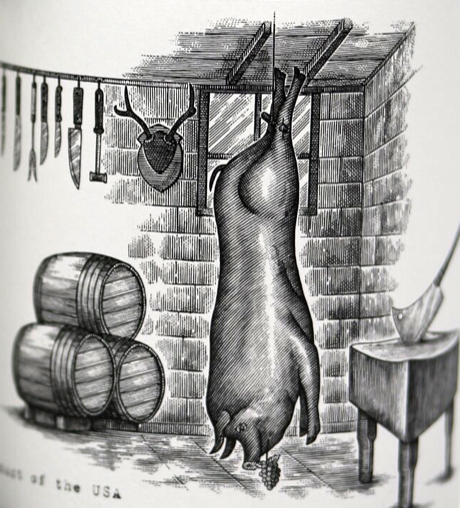




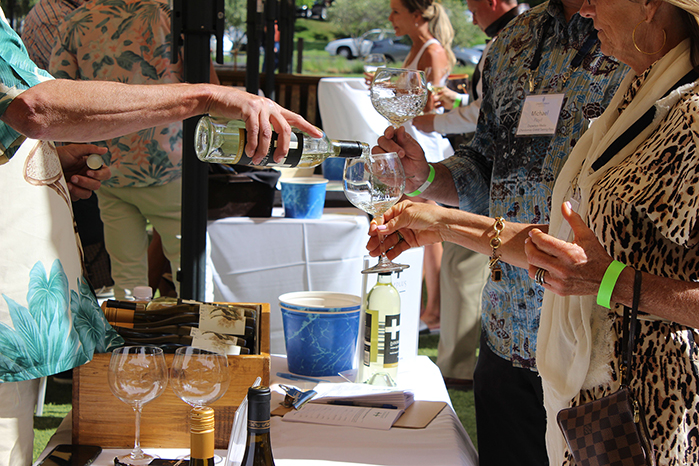 This three-day conference at Napa’s
This three-day conference at Napa’s 